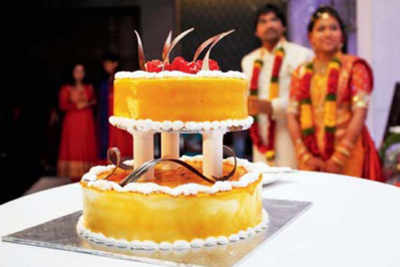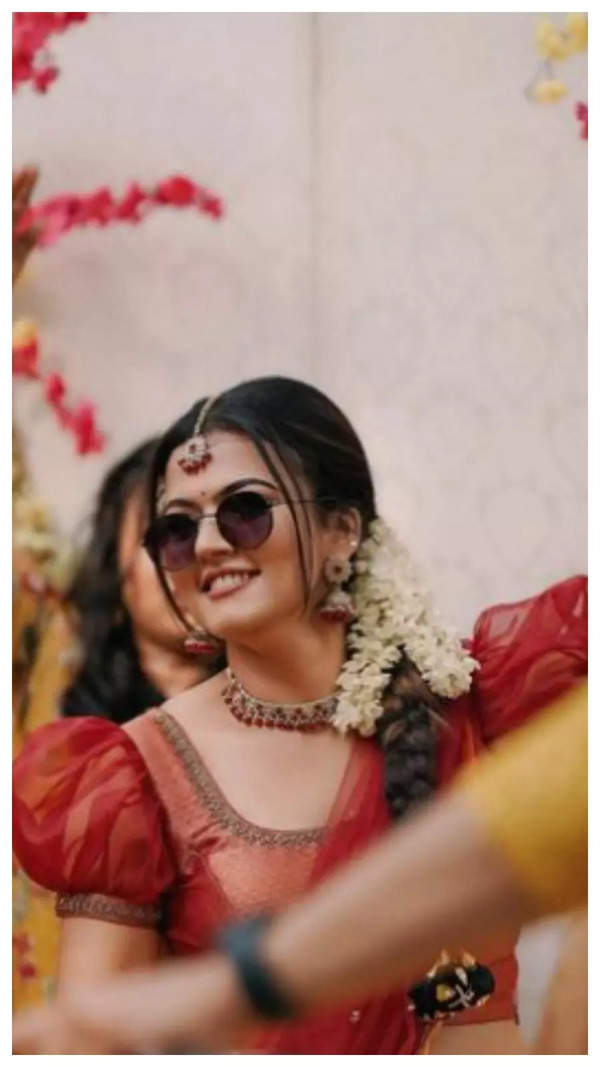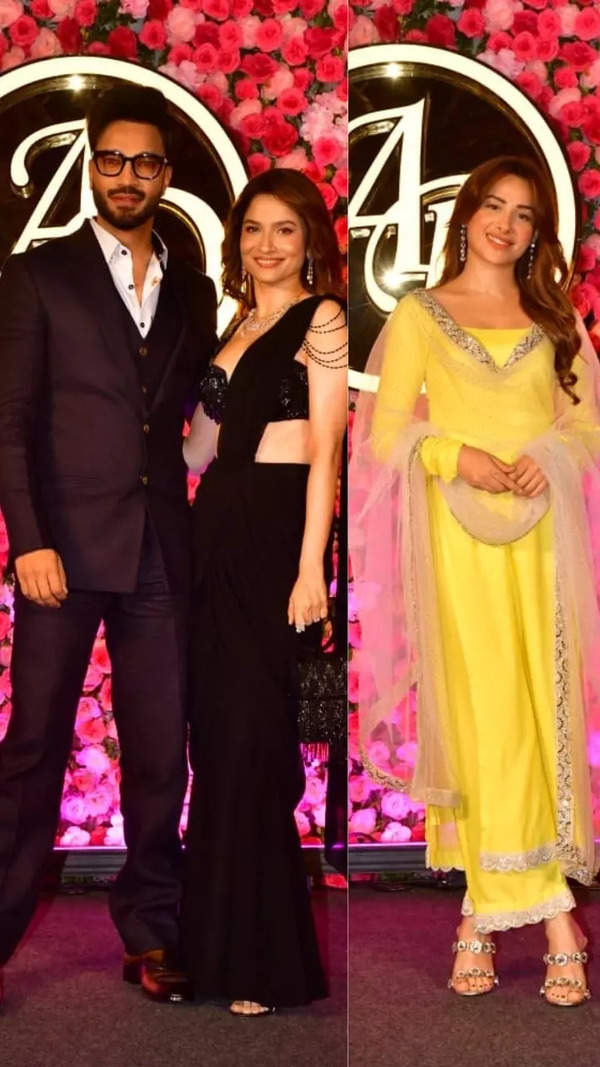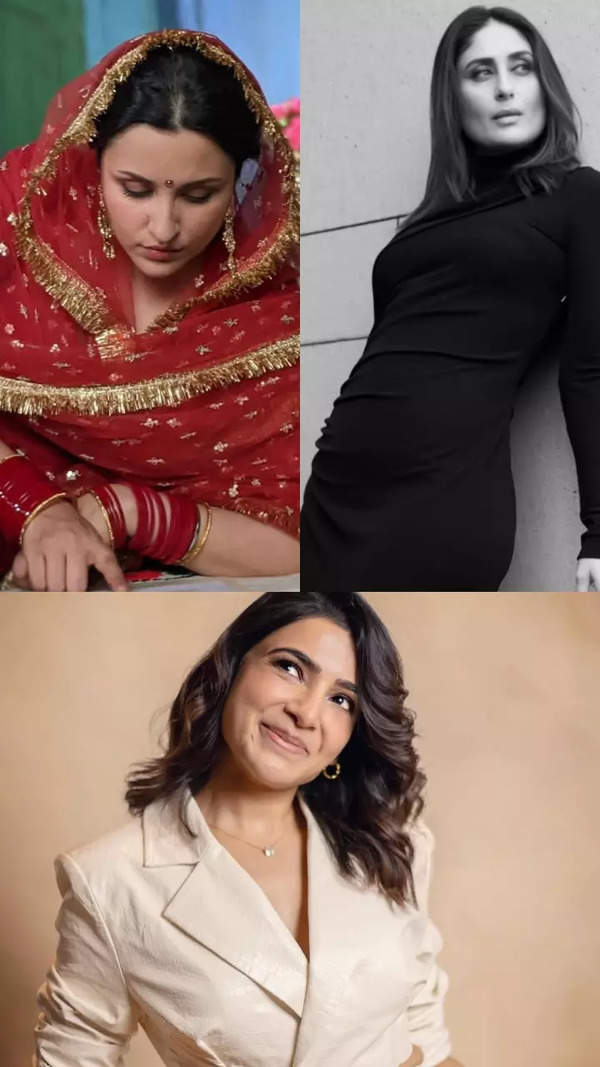- News
- lifestyle
- relationships
- love-sex
- Here's why inter-faith weddings are so cool!
Trending
This story is from January 4, 2015
Here's why inter-faith weddings are so cool!
Indian marriages are increasingly becoming a mixture of rituals borrowed from multiple cultures

Indian marriages are increasingly becoming a mixture of rituals borrowed from multiple cultures
Picture this: A typical Iyer nuptials where the bride and groom are dressed in traditional South Indian clothes. But instead of bangles in gold and glass, the bride is wearing a chuda! And no, neither of them are part-Punjabi.
This is not a stray incident in what is fast becoming a `mish-mash' of wedding rituals, breaking away from tradition.Today , cutting cakes, waltzing to the first dance, wedding gowns are among other things, fast catching up with urban couples, who want to give their traditional wedding rituals a more cosmopolitan twist, by adapting elements from other cultures.
WEARING THE CHUDA
GOWNS FOR THAT FAIRY-TALE EFFECT!
Blame it on the numerous fairy tales we've grown up on or the staple of popular Hollywood wedding pictures, many brides-to-be envision themselves walking down the aisle in a big, white gown. So, even though, most Hindu weddings dictate the use of colourful ensembles, brides are still making place for that stunning white gown in their trousseau, albeit for a different occasion.Take for instance Upasana Kamineni. Before she tied the knot with Ram Charan in 2012, her friends gifted the bride-tobe a Vera Wang wedding gown for her hen night. Meanwhile, other brides are donning the white gowns for cocktail parties, hen nights and other prewedding parties. Rupica Saxena, who got married in November, says, “Wearing a gown for the wedding was something straight out of a fairytale for me. Since I couldn't wear it for my shaadi, I wore a gown for my bachelorette party that my friends organised. I felt like a princess in it.“ CAKE CUTTING AND THE FIRST DANCE
A grand mehendi and sangeet ceremony is now common even in South Indian weddings. So to bring more novelty to their `special day' couples are now opting for a cake cutting ceremony, along with the couple's first dance -a tradition common in Anglo Indian weddings. Kamal Kiran, a wedding photographer, says, “Lately, in all weddings that I've covered, the couple have cut the ceremonial wedding cake and performed their first dance. It has become like a ritual of sorts.People don't want to restrict themselves to certain traditions, just because of religious reasons. In fact, they are looking to explore and do something different and special at their wedding.“
SAYING THEIR OWN VOWS AND EXCHANGING RINGS
Weddings are all about promising to be with each other in sickness and health, till death do us part. While typically in a Hindu wedding, it is the panditji who makes all the effort of saying the mantras and the bride and groom just nods to everything, some couples have decided to say their vows themselves, in front of the sacred fire. When Nishant and Aarti tied the knot this January, they exchanged rings and had their own set of vows to say to each other. “While we went about it the traditional way, we also added our own vows to the ceremony. At the end, you at least want to remember all the promises you have made to each other in a language you understand,“ laughs Nishant.And the couple did not stop at that. Apart from the traditional mangalsutra and sindoor, they also opted for wedding bands. “I work in an MNC so, a mangalsutra or sindoor won't go with my formal wear. So, we opted for wedding bands, a global symbol of being `taken',“ says Aarti.
Picture this: A typical Iyer nuptials where the bride and groom are dressed in traditional South Indian clothes. But instead of bangles in gold and glass, the bride is wearing a chuda! And no, neither of them are part-Punjabi.
This is not a stray incident in what is fast becoming a `mish-mash' of wedding rituals, breaking away from tradition.Today , cutting cakes, waltzing to the first dance, wedding gowns are among other things, fast catching up with urban couples, who want to give their traditional wedding rituals a more cosmopolitan twist, by adapting elements from other cultures.
WEARING THE CHUDA
With inter-faith marriages becoming common now, even the Punjabi chuda (red and white bangles that Punjabi girls wear on their wedding) has found a place in the trousseau of South Indian brides. Pavani Reddy , who recently tied the knot, wore a chuda on her wedding day . “My husband and I are from South India and we had a typical Iyer wedding.But I still wore a chuda. I find it very pretty and have always wanted to wear it,“ shares Pavani.
GOWNS FOR THAT FAIRY-TALE EFFECT!
Blame it on the numerous fairy tales we've grown up on or the staple of popular Hollywood wedding pictures, many brides-to-be envision themselves walking down the aisle in a big, white gown. So, even though, most Hindu weddings dictate the use of colourful ensembles, brides are still making place for that stunning white gown in their trousseau, albeit for a different occasion.Take for instance Upasana Kamineni. Before she tied the knot with Ram Charan in 2012, her friends gifted the bride-tobe a Vera Wang wedding gown for her hen night. Meanwhile, other brides are donning the white gowns for cocktail parties, hen nights and other prewedding parties. Rupica Saxena, who got married in November, says, “Wearing a gown for the wedding was something straight out of a fairytale for me. Since I couldn't wear it for my shaadi, I wore a gown for my bachelorette party that my friends organised. I felt like a princess in it.“ CAKE CUTTING AND THE FIRST DANCE
A grand mehendi and sangeet ceremony is now common even in South Indian weddings. So to bring more novelty to their `special day' couples are now opting for a cake cutting ceremony, along with the couple's first dance -a tradition common in Anglo Indian weddings. Kamal Kiran, a wedding photographer, says, “Lately, in all weddings that I've covered, the couple have cut the ceremonial wedding cake and performed their first dance. It has become like a ritual of sorts.People don't want to restrict themselves to certain traditions, just because of religious reasons. In fact, they are looking to explore and do something different and special at their wedding.“
SAYING THEIR OWN VOWS AND EXCHANGING RINGS
Weddings are all about promising to be with each other in sickness and health, till death do us part. While typically in a Hindu wedding, it is the panditji who makes all the effort of saying the mantras and the bride and groom just nods to everything, some couples have decided to say their vows themselves, in front of the sacred fire. When Nishant and Aarti tied the knot this January, they exchanged rings and had their own set of vows to say to each other. “While we went about it the traditional way, we also added our own vows to the ceremony. At the end, you at least want to remember all the promises you have made to each other in a language you understand,“ laughs Nishant.And the couple did not stop at that. Apart from the traditional mangalsutra and sindoor, they also opted for wedding bands. “I work in an MNC so, a mangalsutra or sindoor won't go with my formal wear. So, we opted for wedding bands, a global symbol of being `taken',“ says Aarti.
End of Article
FOLLOW US ON SOCIAL MEDIA









